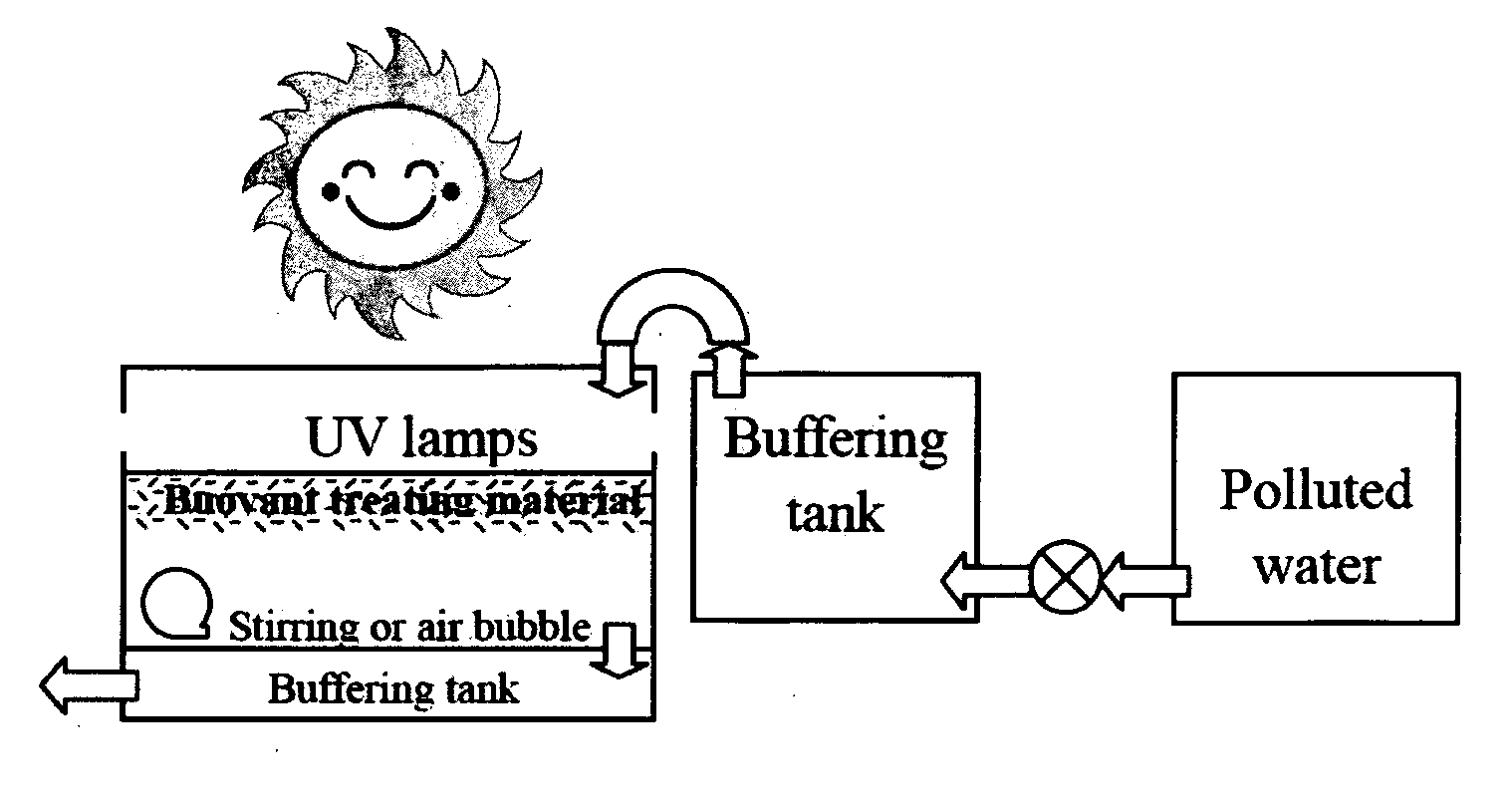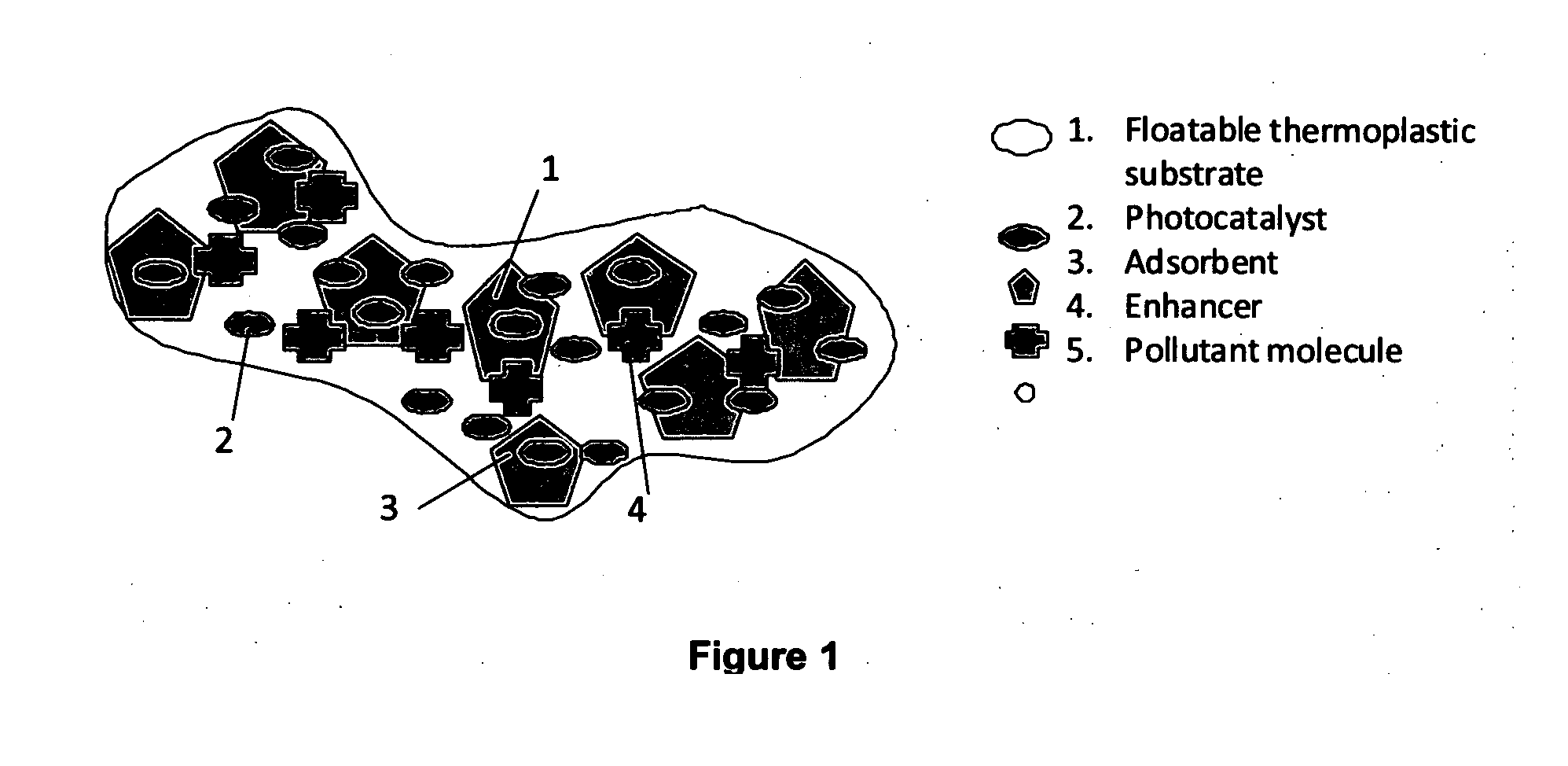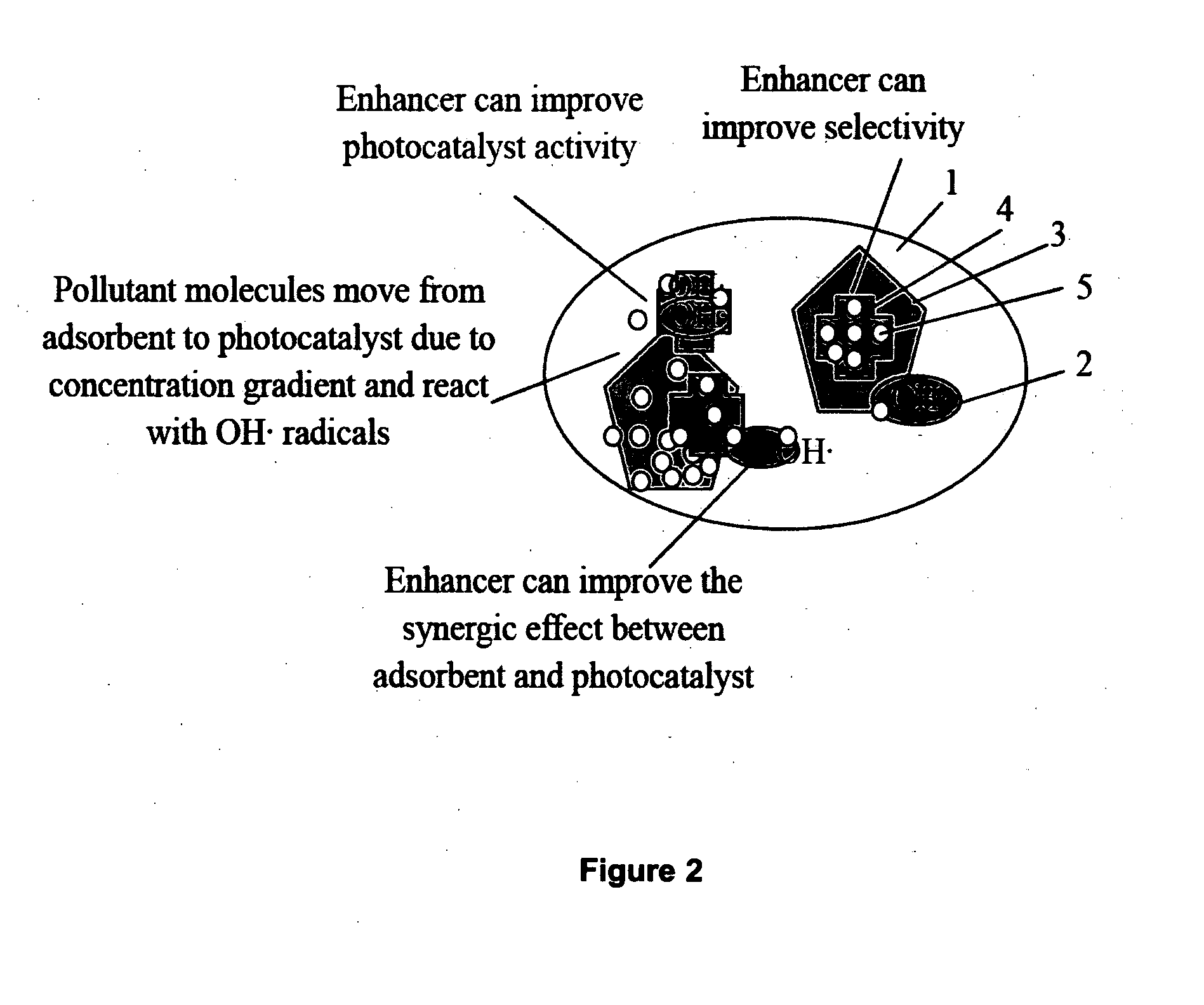Buoyant Multifunctional Composite Material For Effective Removal Of Organic Compounds In Water And Wastewater
- Summary
- Abstract
- Description
- Claims
- Application Information
AI Technical Summary
Benefits of technology
Problems solved by technology
Method used
Image
Examples
example 1
[0037]A 5 gram amount of TiO2 particles with a size of 25 nm is treated in a 2 g / L salicylic acid solution for 30 min, and dried in an oven at 100° C. for 2 h. Then, the treated TiO2 particles are mixed with 0.05 grams of multiwall carbon nanotubes (110˜170 nm diameter at 5˜9 μm length), and heated at 200° C. for 2 h in an oven. Then, a 10 gram amount of 100 mesh activated carbon particles is mixed with the TiO2 and carbon nanotube mixture, and all of the components are then placed into a 250 mL reactor. The mixture in the reactor is preheated to and maintained at 200° C. with a hot-plate heater and stirred with a mechanical mixer. Then, a 30 gram amount of polypropylene (PP) granules with a diameter of approximately 4 mm is added into the reactor. The mixture in the reactor is further heated with stirring for the temperature to increase to and be maintained at 160° C. The process continues for another 3 min. Then, the PP granules are fully immobilized with small-sized powder mixtur...
example 2
[0038]A multifunctional buoyant photocatalyst was prepared from 50 grams P25 TiO2 (AEROXIDE, Degussa) mixed with 50 grams of 100 mesh activated carbon particles in an 800 mL reactor. The mixture was preheated to and maintained at 185° C. with a hot-plate heater and stirred with a mechanical mixer. Next, 50 polypropylene (PP) granules having a diameter of about 4 mm were added into the reactor. The mixture was further heated with stirring for 10 min. The PP granules were coated with TiO2 and activated carbon particles. The treated PP granules were then collected and washed with ethanol and water. The washed granules were added to a 300 mL glass beaker along with 300 mL of a 10 ppm phenol solution. The glass beaker was irradiated by a 150 W xenon lamp having a 3″ diameter light beam. One and a half liters per minute of air was introduced to the phenol solution with an air diffuser. The phenol concentration was analyzed by HPLC equipped with a C18 column. As shown in FIG. 4, the concen...
PUM
| Property | Measurement | Unit |
|---|---|---|
| Temperature | aaaaa | aaaaa |
| Temperature | aaaaa | aaaaa |
| Fraction | aaaaa | aaaaa |
Abstract
Description
Claims
Application Information
 Login to View More
Login to View More - R&D
- Intellectual Property
- Life Sciences
- Materials
- Tech Scout
- Unparalleled Data Quality
- Higher Quality Content
- 60% Fewer Hallucinations
Browse by: Latest US Patents, China's latest patents, Technical Efficacy Thesaurus, Application Domain, Technology Topic, Popular Technical Reports.
© 2025 PatSnap. All rights reserved.Legal|Privacy policy|Modern Slavery Act Transparency Statement|Sitemap|About US| Contact US: help@patsnap.com



